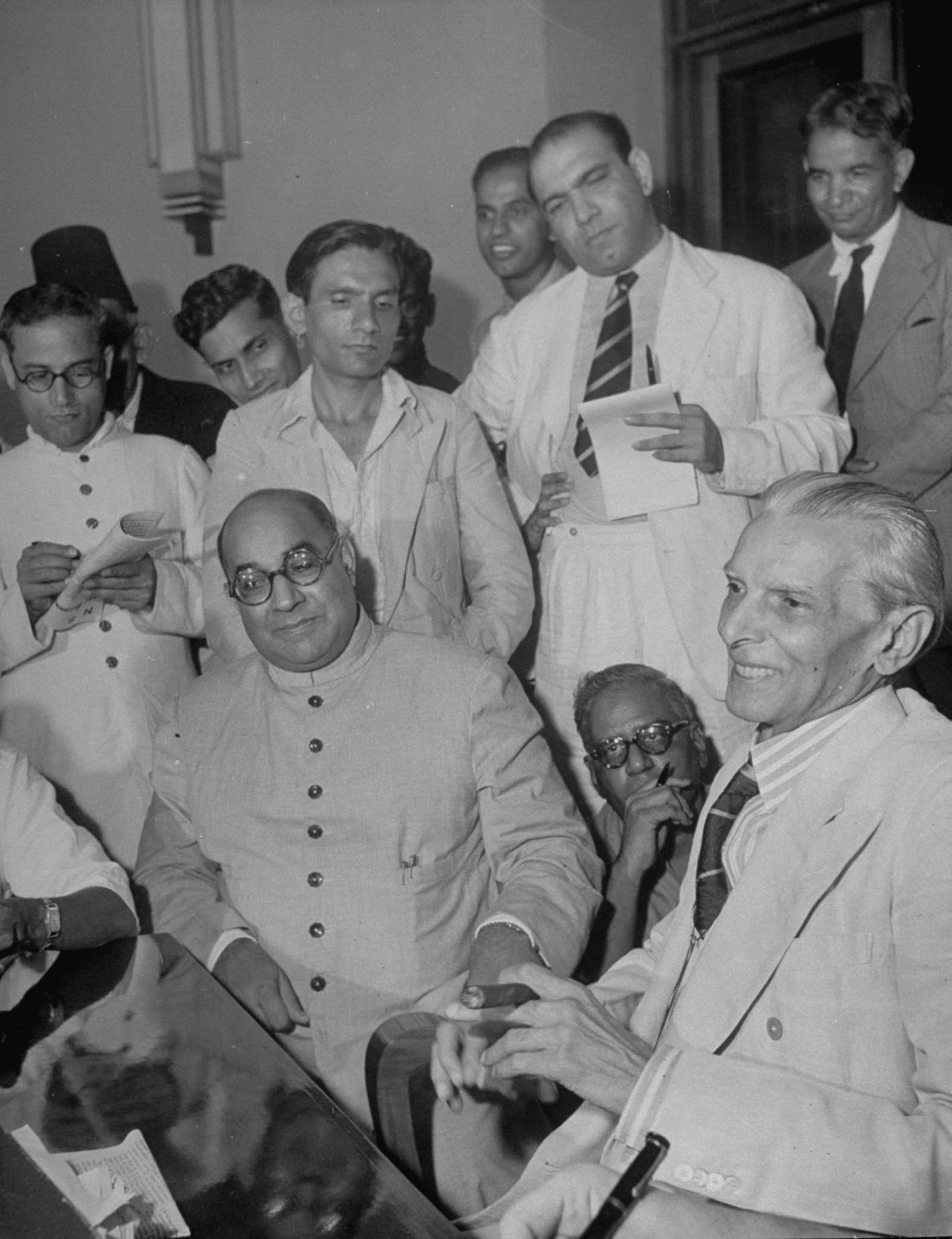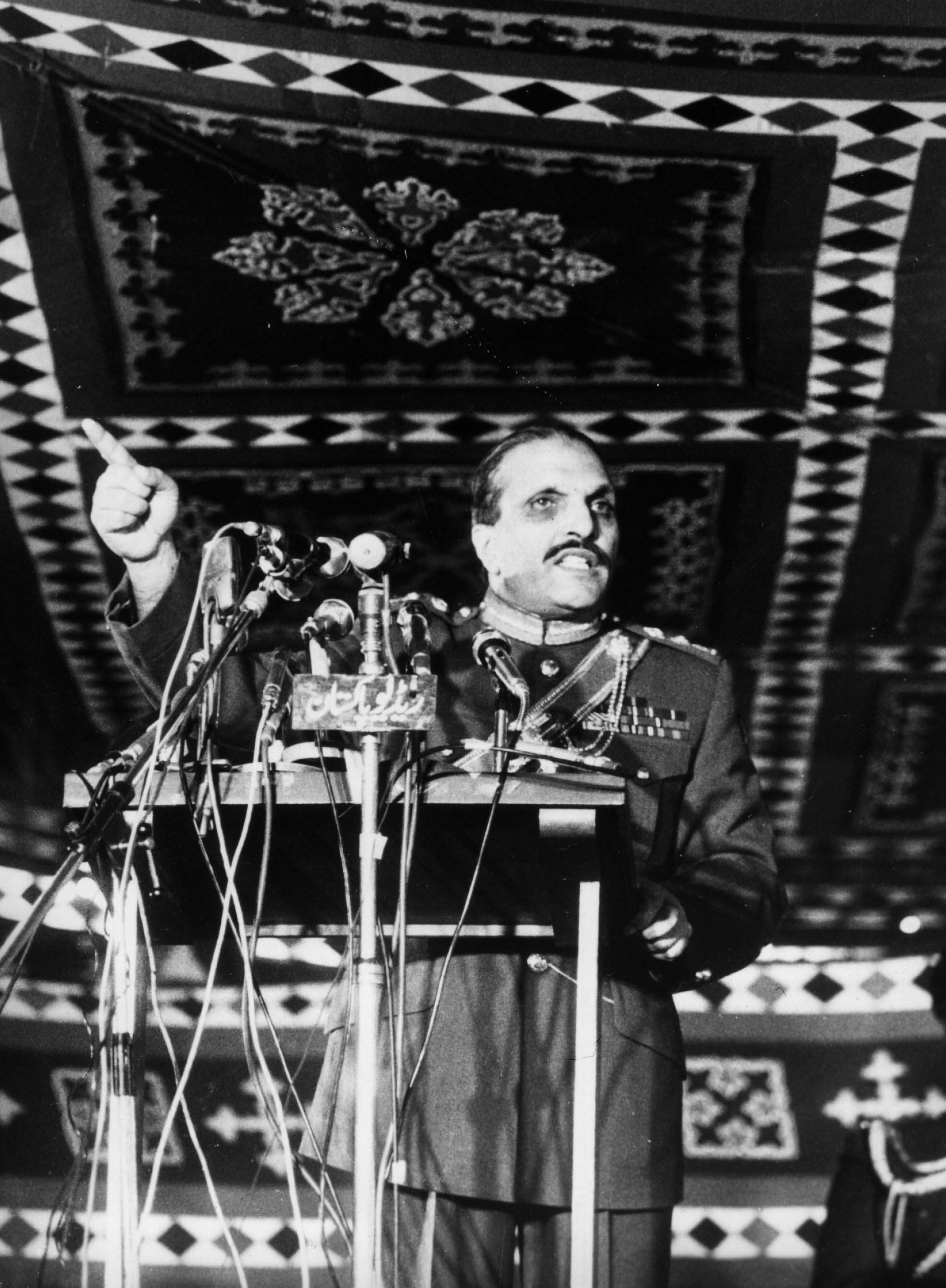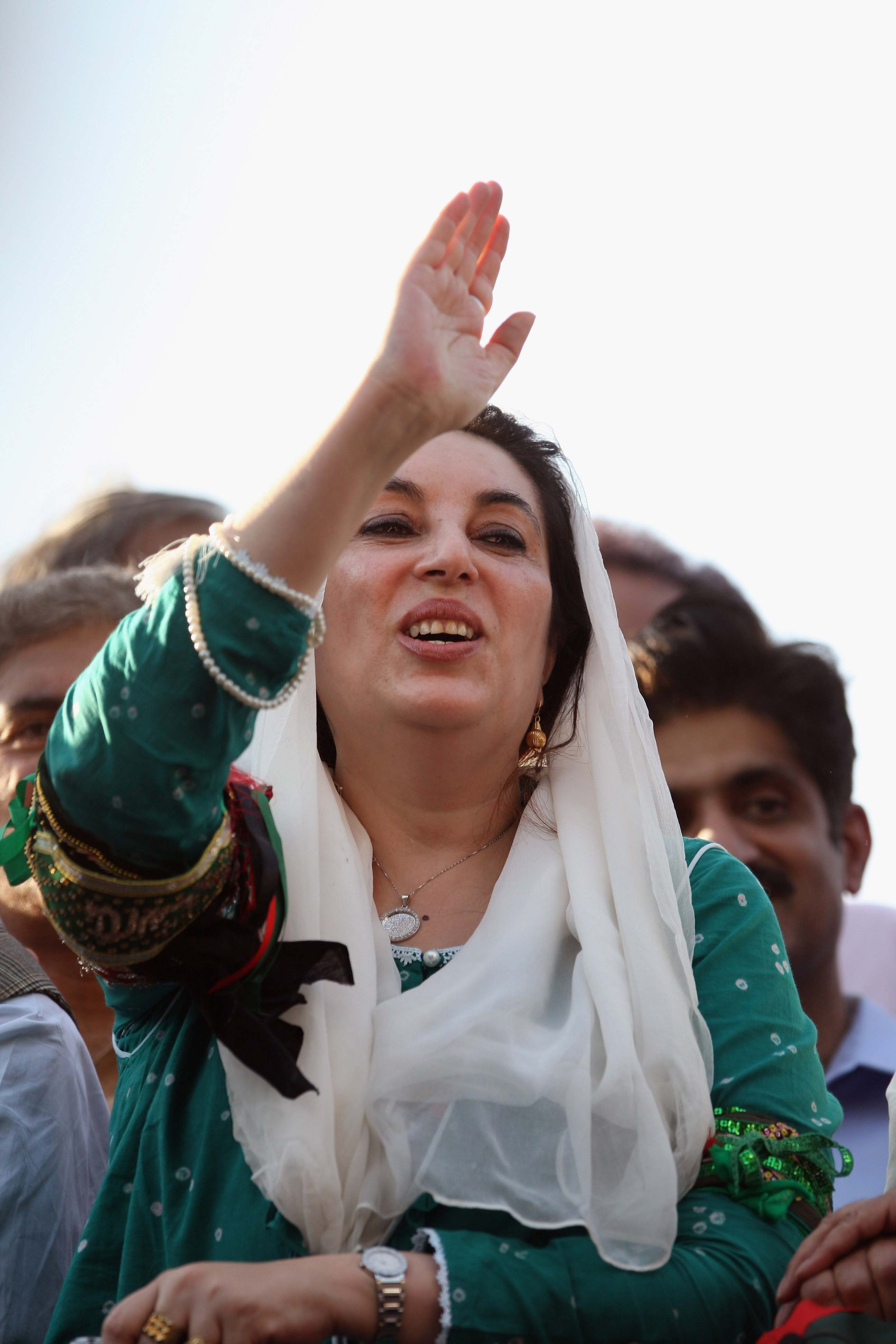Home / Timeline
Timeline
Chronology of Historical and Art Events 1947–2008
Pakistan, as the Muslim state of East and West Pakistan, is created out of the partition of the Indian subcontinent at the end of British rule. Mohammed Ali Jinnah is appointed its first governor general and Liaquat Ali Khan its first prime minister.
Mohammed Ali Jinnah dies following a brief illness.
War between India and Pakistan breaks out over the disputed territory of Kashmir.
Liaquat Ali Khan is assassinated.
A group of Pakistani artists—among the first to have received a western education— establishes the Lahore Art Circle.
An amendment to the constitution declares Pakistan as an Islamic Republic.
General Ayub Khan establishes Pakistan’s first period of martial law, which brings censorship and suspension of regional rights. Art and culture receive government funding, which serves to soften the image of the military government.
Ayub Khan becomes president of Pakistan. His government produces propagandist documentaries, which are screened before every film in commercial movie theaters, to promote his nation-building program.
Pakistan’s first private art gallery, the Gallery of Contemporary Art, opens in Rawalpindi.
Pakistan enters a second war with India over Kashmir.
Ayub Khan resigns. General Yahya Khan becomes president and establishes Pakistan’s second period of martial law.
Zulfiqar Ali Bhutto’s populist leftist party, the Pakistan People’s Party (PPP), comes to power in the first national election of the country.
Civil war between the East and West wings of Pakistan results in the secession of East Pakistan and the establishment of the state of Bangladesh (formerly East Pakistan).
Pakistan signs the Simla Agreement with India, setting a new Line of Control with Kashmir.
Zulfiqar Ali Bhutto becomes prime minister and initiates populist reforms. Under his government, a new national cultural policy validates the production of art and elevates the socioeconomic role of the artist.
General Zia-ul-Haq becomes president and imposes Pakistan’s third period of martial law. Zia initiates a process of Islamization, which affects the education system, the media, and the press.
Zulfiqar Ali Bhutto is executed after being tried for conspiring to murder and rig elections.
As part of Zia’s Islamization process, the Hudood Ordinance is enacted. The ordinance implements sharia, or Islamic, law for the punishment of theft, the drinking of alcohol, and extramarital sex. Artistic production comes under government scrutiny for the inclusion of un-Islamic form and content. Landscape, calligraphy, and nonfigurative abstraction receive patronage above other forms.
The United States pledges military assistance to Pakistan following the Soviet invasion of Afghanistan.
Zia’s program of Islamization, which marginalizes non-Muslims and women, is resisted by educated women, journalists, local law associations, and human rights activists. This marginalization results in the formation of the Women’s Action Forum (WAF) and fosters the evolution of a variety of independent artistic trends in the practices of women artists.
The Presidential Ordinance enacts the Law of Evidence, which renders the evidence of two women equal to that of one man.
Martial law is lifted, allowing political parties to compete in elections.
Benazir Bhutto, daughter of Zulfiqar Ali Bhutto, leads her father’s party, the PPP, in national elections.
The NCA offers miniature painting as a full-fledged degree program run by Zahoor ul Akhlaq and Ustad Bashir Ahmed.
After Zia is killed in a plane crash, Benazir Bhutto is elected prime minister. Under Bhutto’s government, artists enjoy freedom to explore new ideas and iconography; many artists look to popular and folk culture, literature, urban mythologies, and miniature painting for inspiration.
Benazir Bhutto’s government is dismissed on charges of corruption. Nawaz Sharif becomes prime minister and begins the process of economic liberalization.
Nawaz Sharif passes the Shariat Act, which paves the way for the formal incorporation of sharia law into Pakinstan’s legal code.
Benazir Bhutto is elected prime minister for the second time.
Benazir Bhutto’s government is again dismissed, and Bhutto goes into exile.
Nawaz Sharif returns as prime minister.
Following Pakistan’s first nuclear tests, the United States imposes economic sanctions on Pakistan.
Armed conflict between Pakistan and India escalates in Kashmir.
The armed forces chief of staff, General Pervez Musharraf, overthrows Sharif in a military coup.
Zahoor ul Akhlaq and his daughter are murdered when a gunman breaks into their home. Anwar Saeed, who was visiting Akhlaq at the time, is also shot but survives.
Musharraf appoints himself president while remaining army chief.
Following the attacks of September 11, Musharraf becomes a key ally of the United States in its fight against terrorism. The United States lifts some of the sanctions imposed on Pakistan.
During this period, artists demonstrate a playful engagement with political issues and a growing interest in new media technologies.
Musharraf calls for parliamentary elections, which result in a hung parliament, and religious parties gain more seats than ever before. A coalition government is formed by the Pakistan Muslim League (PML).
Sharia law is introduced in the North West Frontier Province of Pakistan.
Ceasefire is declared between Pakistan and India over Kashmir.
Musharraf proposes his ideology of “Enlightened Moderation,” which calls for the Muslim world to practice a moderate form of Islam and to avoid violence.
The United States launches a missile strike targeting senior Al Qaeda figures in Pakistani territory on the border with Afghanistan.
Sectarian violence, nationalist uprisings, and government raids intensify antigovernment protests.
As violence escalates across the country, Musharraf imposes government control over the media, the Internet, and mobile phones.
Benazir Bhutto returns to Pakistan from exile. A suicide bombing during her homecoming procession kills dozens.
Benazir Bhutto is assassinated at an election campaign rally in Rawalpindi. Elections are postponed for one month.
The National Art Gallery, Islamabad, is inaugurated with a group of exhibitions, collectively titled Moving Ahead, which showcase the work of many of the significant artists in Pakistan’s art history.
The two main opposition parties, the PPP and Nawaz Sharif’s PML, win a clear majority in the general election and form a coalition government. Asif Ali Zardari, Benazir Bhutto’s widower, becomes president.






